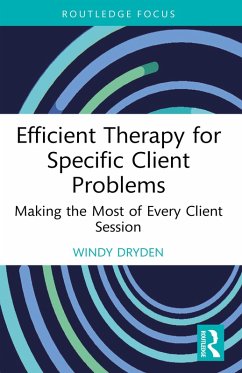Efficient Therapy for Specific Client Problems presents the case for such an approach and details how it can be practised efficiently. The book outlines the 26 principles of efficient therapy for specific client problems with clinical examples demonstrating each of the main points. Topics covered include identifying when problem-focused help is appropriate, developing a problem list with the client and setting an agenda for each session, problem assessment, and helping a client find, develop, and implement a solution. The book is highly practical in emphasis with approachable guidelines for helping clients directly with their specific problems and appendices that feature a pre-therapy form, a pre-session form, a session rating form and an end of therapy questionnaire.
Designed to be read by therapists, counsellors, counselling and clinical psychologists, and students of these disciplines, this accessible text will be valuable to readers across different levels of experience.
Dieser Download kann aus rechtlichen Gründen nur mit Rechnungsadresse in A, B, BG, CY, CZ, D, DK, EW, E, FIN, F, GR, HR, H, IRL, I, LT, L, LR, M, NL, PL, P, R, S, SLO, SK ausgeliefert werden.


